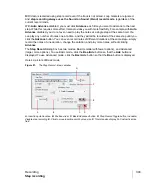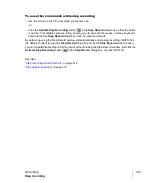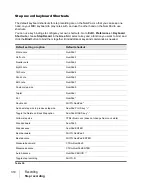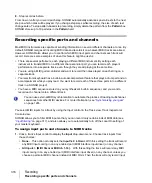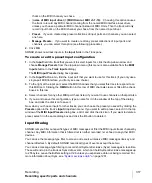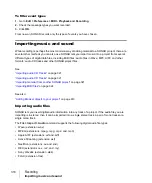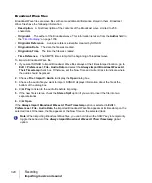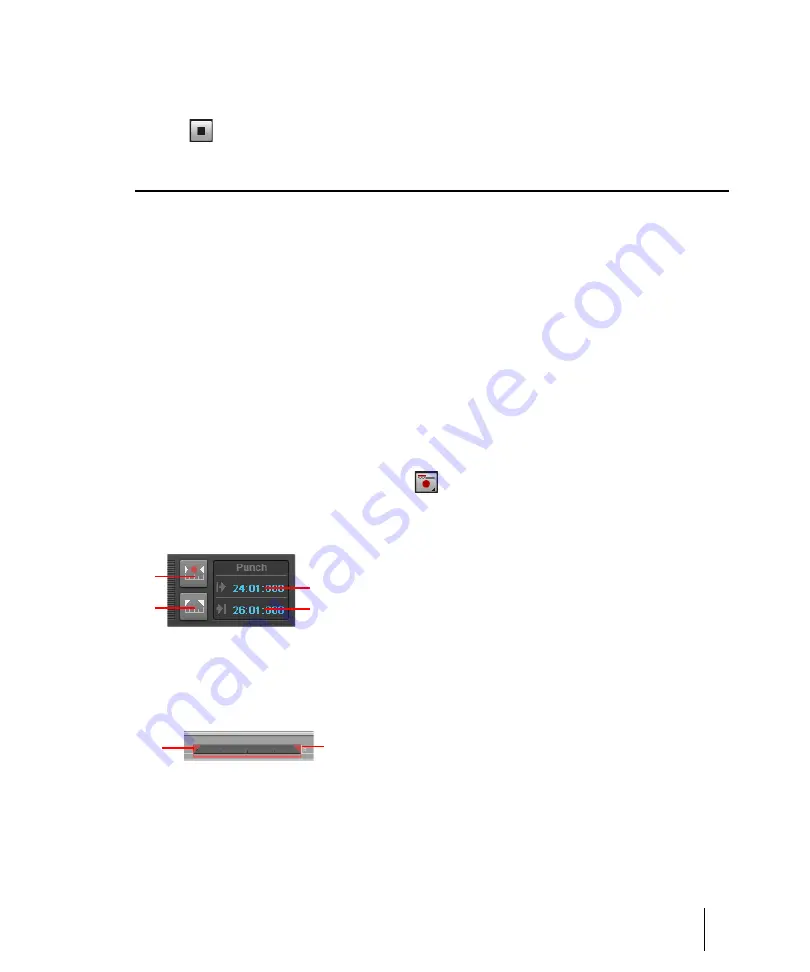
305
Punch recording
Recording
9.
Play or perform the material you want to record. At the end of the loop, SONAR will return to the
start of the loop and you can record the next take.
10.
Click
or press the SPACEBAR when you want to stop recording.
The takes are stored in the manner you requested.
Punch recording
Suppose you are happy with most of a track but want to replace some sound or add new material in
one small section—perhaps as small as a couple of notes. This is where punch recording comes in
handy, because it lets you record new material only within a specified range of times.
For example, suppose you recorded a 32-bar keyboard solo but made some mistakes in the 24
th
and 25
th
bars. With punch recording, you can play the entire solo again, so you make sure you can
get the feel you want. However, only the bars you want to correct are actually recorded. That way,
you don’t have to worry about introducing new mistakes elsewhere in the recording.
To use punch recording, follow these steps:
• Enable punch recording.
• Set the start and end times of the punch.
• Choose Comping, Sound on Sound mode or Overwrite mode.
• Start recording by pressing R or clicking the
button on the Control Bar’s Transport module.
The Control Bar’s Punch module shows the punch settings, as shown here:
Figure 80.
The Punch module.
A.
Auto-Punch On/Off
B.
Set Punch Time to Select
C.
Punch In Time
D.
Punch Out Time
When punch recording is enabled, the punch times are indicated by special markers in the Time
Ruler, which is at the top of the Clips pane:
A.
Punch In
B.
Punch Out
After you punch record, choosing
Edit > Undo
both discards any new material you recorded and
restores the original material that had been deleted.
A
B
C
D
A
B
Summary of Contents for sonar x3
Page 1: ...SONAR X3 Reference Guide...
Page 4: ...4 Getting started...
Page 112: ...112 Tutorial 1 Creating playing and saving projects Saving project files...
Page 124: ...124 Tutorial 3 Recording vocals and musical instruments...
Page 132: ...132 Tutorial 4 Playing and recording software instruments...
Page 142: ...142 Tutorial 5 Working with music notation...
Page 150: ...150 Tutorial 6 Editing your music...
Page 160: ...160 Tutorial 7 Mixing and adding effects...
Page 170: ...170 Tutorial 8 Working with video Exporting your video...
Page 570: ...570 Control Bar overview...
Page 696: ...696 AudioSnap Producer and Studio only Algorithms and rendering...
Page 720: ...720 Working with loops and Groove Clips Importing Project5 patterns...
Page 820: ...820 Drum maps and the Drum Grid pane The Drum Grid pane...
Page 848: ...848 Editing audio Audio effects audio plug ins...
Page 878: ...878 Software instruments Stand alone synths...
Page 1042: ...1042 ProChannel Producer and Studio only...
Page 1088: ...1088 Sharing your songs on SoundCloud Troubleshooting...
Page 1140: ...1140 Automation Recording automation data from an external controller...
Page 1178: ...1178 Multi touch...
Page 1228: ...1228 Notation and lyrics Working with lyrics...
Page 1282: ...1282 Synchronizing your gear MIDI Machine Control MMC...
Page 1358: ...1358 External devices Working with StudioWare...
Page 1362: ...1362 Using CAL Sample CAL files...
Page 1386: ...1386 Troubleshooting Known issues...
Page 1394: ...1394 Hardware setup Set up to record digital audio...
Page 1400: ...1400 MIDI files...
Page 1422: ...1422 Initialization files Initialization file format...
Page 1463: ...1463 Misc enhancements New features in SONAR X3...
Page 1470: ...1470 Comparison...
Page 1518: ...1518 Included plug ins Instruments...
Page 1532: ...1532 Cyclone Using Cyclone...
Page 1694: ...1694 Beginner s guide to Cakewalk software Audio hardware sound cards and drivers...
Page 1854: ...1854 Preferences dialog Customization Nudge Figure 518 The Nudge section...
Page 1856: ...1856 Preferences dialog Customization Snap to Grid Figure 519 The Snap to Grid section...
Page 1920: ...1920 Snap Scale Settings dialog...
Page 2042: ...2042 View reference Surround panner...



















